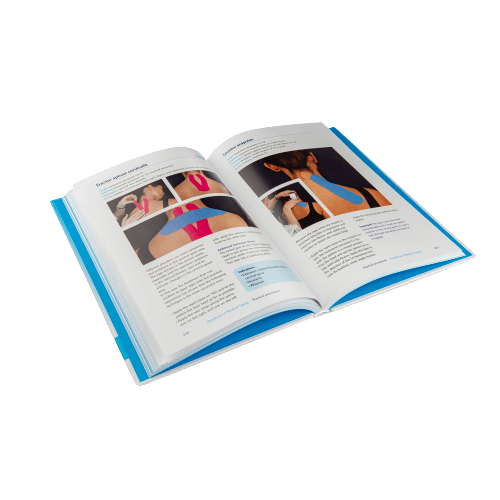Some newborns are struggling to keep their head upright, and their head appears tilted and twisted. This could be due to a condition, known as Congenital Torticollis. This condition is characterised by a deviation in the head’s position that usually becomes noticeable within a few weeks after birth.
Understanding Congenital Torticollis
Congenital Torticollis is caused by a thickening in the sternocleidomastoid muscle, a neck muscle responsible for bending and rotating the head. This muscle has two heads: the sternal head, attached to the sternum (breastbone), and the clavicular head, attached to the clavicle (collarbone). It runs upward and inserts into a bony prominence of the temporal bone called the mastoid process. The thickening in the muscle is easy to see and feel. In some cases, it may resolve on its own within a few months, but if the muscle continues to shorten, the head will start to tilt permanently.
A physiotherapist can use CureTape® kinesiology tape as part of the treatment to counteract the effects of Congenital Torticollis.
Get started with these items to tape congenital torticollis
-
CureTape® Classic Kinesiology Tape
Bestseller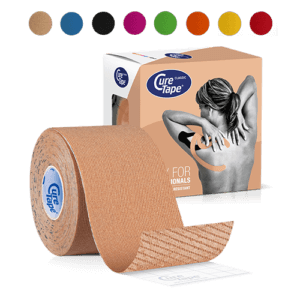 $19.95
In stockSelect options This product has multiple variants. The options may be chosen on the product page
$19.95
In stockSelect options This product has multiple variants. The options may be chosen on the product page -
CureTape® Gentle – Kinesiology Tape for sensitive skin
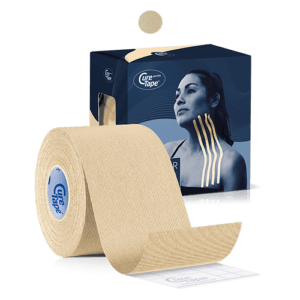 $23.95
In stockAdd to cart
$23.95
In stockAdd to cart -
CureTape® Classic 2.5cm Kinesiology Tape
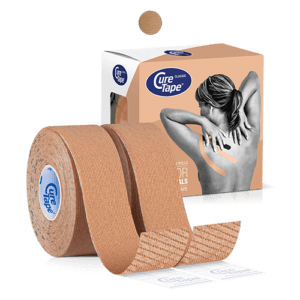 $21.95
In stockAdd to cart
$21.95
In stockAdd to cart -
CureTape® Classic 1cm Kinesiology Tape
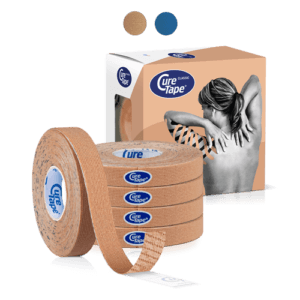 $34.95
In stockSelect options This product has multiple variants. The options may be chosen on the product page
$34.95
In stockSelect options This product has multiple variants. The options may be chosen on the product page
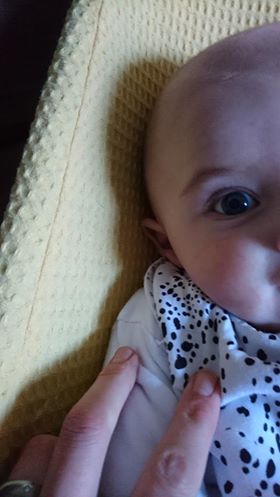
Photo 1
Congenital Torticollis treatment with kinesiology tape
If you suspect that your child has congenital torticollis or if it has already been diagnosed by a specialist, it is essential to seek treatment from a licensed pediatric physiotherapist. Untreated, congenital torticollis can cause the head to tilt unevenly, which could potentially lead to the need for surgical intervention in the future. Pediatric physiotherapists who are trained in the use of kinesiology tapes as part of their practice can effectively utilize CureTape® to treat congenital torticollis.
Early intervention with a pediatric physiotherapist can help alleviate the symptoms of congenital torticollis and prevent the condition from worsening. The physiotherapist will assess the severity of the torticollis and develop a personalised treatment plan tailored to your child’s needs. This plan may include stretching exercises, positioning techniques, and the application of CureTape® to help correct the alignment of the head and neck muscles.
CureTape® Gentle is often used for infants due to its gentle adhesive and skin-friendly properties. The tape is applied over the thickened area of the sternocleidomastoid muscle without stretching, promoting muscle relaxation and correcting the head position. Regular monitoring by the physiotherapist will ensure that the tape is applied correctly and that your child responds well to the treatment.
Submitted case report of a 5-month-old baby with Congenital Torticollis:
We received this case study from Claartje Gouw, a physiotherapist and mother of a (at the time) 5-month-old baby. Her child was receiving treatment from a pediatric physiotherapist and an osteopath for misalignment issues. The baby’s right ear pulls towards the right shoulder, and turning to the right is not possible (photo 1).
How to tape for Congenital Torticollis in babies
For babies, we recommend using our variant CureTape® Gentle. This tape has been specially developed for very young children, elderly people, and those with very sensitive skin. It’s important to achieve the desired effect with as little tape as possible. In this case, a strip of CureTape® about 2.5 cm wide and 10 cm long has been cut.
-
Preparation
- Tear the release paper in the middle to prepare the tape for application.
-
Application
- Positioning: It is not necessary to apply the tape over the entire sternocleidomastoid muscle; applying it over the thickened fibrotic area is sufficient.
- Technique: Apply the tape using a ligament technique, without stretching it. Place it over the thickened fibrotic area of the sternocleidomastoid muscle.
-
Duration
- Although the effect is visible immediately, it is recommended to keep the tape on for 3 weeks, with 5 days of taping followed by 2 days of rest, before applying new tape.
-
Skin Care
- Ensure the tape does not cause any skin irritation.
- Remove the tape carefully. It’s recommended to “grease” the tape with baby oil to dissolve the acrylic adhesive layer before removing it with an unrolling movement.
-
Monitoring
- Monitor the baby’s response to the taping. If you notice any skin irritation or discomfort, discontinue use and consult a healthcare professional.
This method is gentle and effective for treating congenital torticollis in babies.
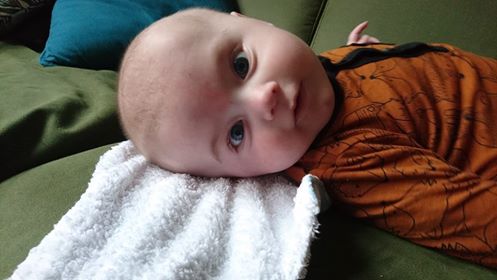
Photo 2
Learn how to tape
- The Ultimate Taping Guide: Focuses on self-taping for the 30 most common injuries where taping provides support.
- Kinesiology Taping Method Manual: Designed for (para medical) professionals, covering basic taping techniques and various pathologies.
- Decompressive Taping Techniques Manual: Specifically focuses on lymphatic taping methods for decompression.
What are you waiting for? Order a copy today!
THYSOL is the manufacturer of the kinesiology tape brand CureTape. As CureTape, we have been training and supplying professionals for 25 years. And consumers now know how to find us too! By manufacturing all our tapes in our own factory, we can guarantee the best quality!
Please note that the indicated tape applications and information on our website about the possibilities with kinesiology tape have not yet been scientifically proven. The statements and examples mentioned are based on long-term experiences of patients and trained therapists.
Contraindications not to tape: pregnancy, open wounds, broken bones, unexplained complaints, allergies and skin diseases, use of medication such as blood thinners, thrombosis and fever. Always apply tape in consultation with a specialist.

